🎥 Video: How Retailers Use Gamified Loyalty to Outperform Competitors.
Save your seat.


Building astonishing customer engagement and experience in a world overwhelmed by tons of communication is a huge challenge. More and more companies use mobile apps to create dedicated channels of communication with their clients and establish a bond that can be something more than just messages related to customers' purchases.
A mobile loyalty program app is a digital tool that helps brands reward and engage their customers directly through their smartphones. It's a full experience designed to build stronger relationships between brands and their users.
These apps offer perks like personalized discounts, early access to promotions, and tailored communication in one place. Instead of handing out plastic cards or generic email offers, brands can use mobile apps to create a direct, real-time connection with their customers.
Here's why that matters:
In short, a mobile loyalty app is a smart way for companies to go beyond transactions and start building meaningful, long-term relationships.
In most cases, yes, they're both safe and worth using.
Let's start with safety. Loyalty apps often ask for some personal data – name, email, shopping habits, maybe even payment info. That can feel sensitive, so it's fair to be cautious.
The good news? Most legitimate loyalty apps (from brands like Starbucks, H&M, Nordstrom, etc.) use solid security practices:
To keep your info safe, just follow a few simple rules:
Looking for the best mobile loyalty app for your brand, or just curious which ones work? In this part, we've handpicked and broken down top-performing loyalty apps by industry, functionality, and design so you can find inspiration or benchmark your own strategy.
Tesco Clubcard gives users access to vouchers on their phones and allows them to manage the Clubcard account on the go. Customers can collect points with the Clubcard app by scanning their phone instead of a card.
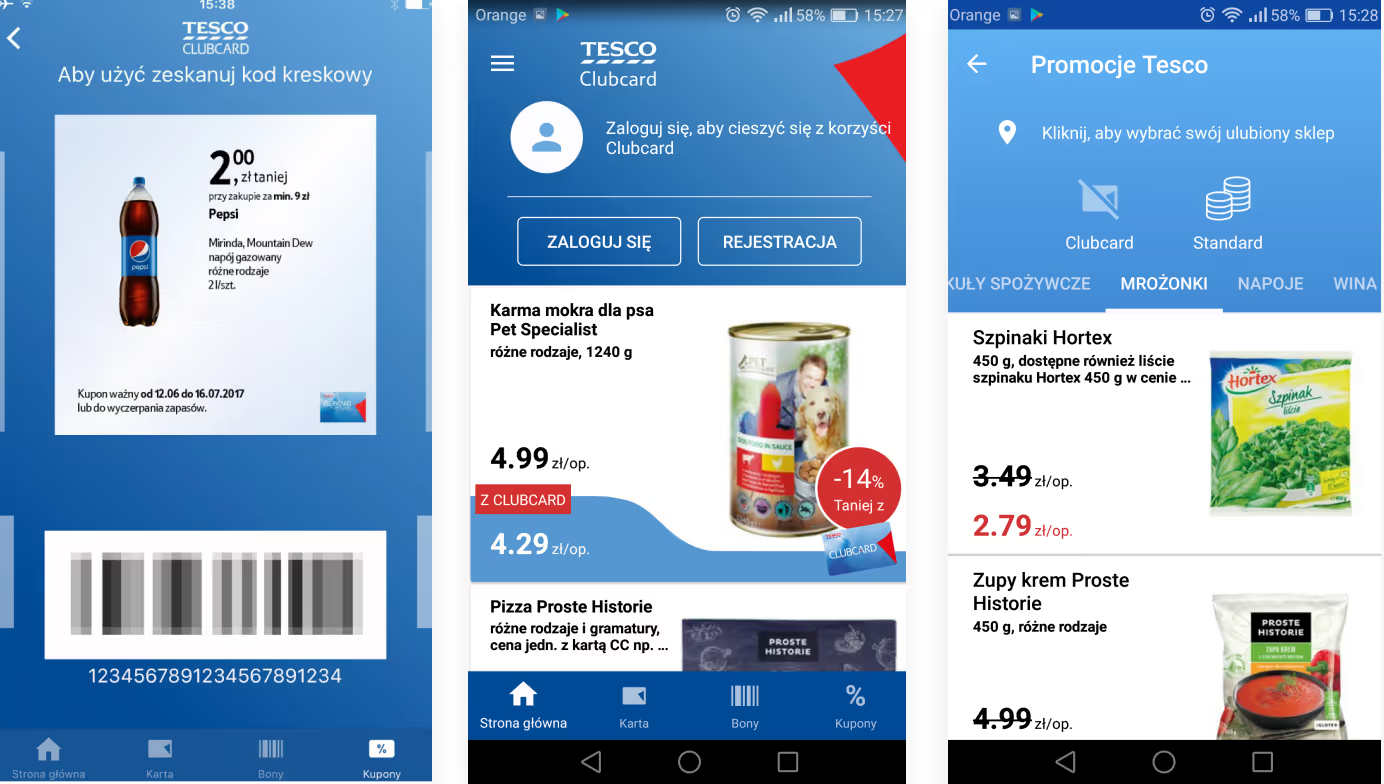
The presentation includes a clear icon with the brand's logo and the name of the benefit program. App preview contains screenshots presenting the main functions.
The H&M app enables users to browse and shop for the latest fashion offers, exclusive promotions, and information about the latest trends, news, and videos. Users can get push notifications about new deals and events at local H&M stores, follow order status, check account balance, and edit personal details.
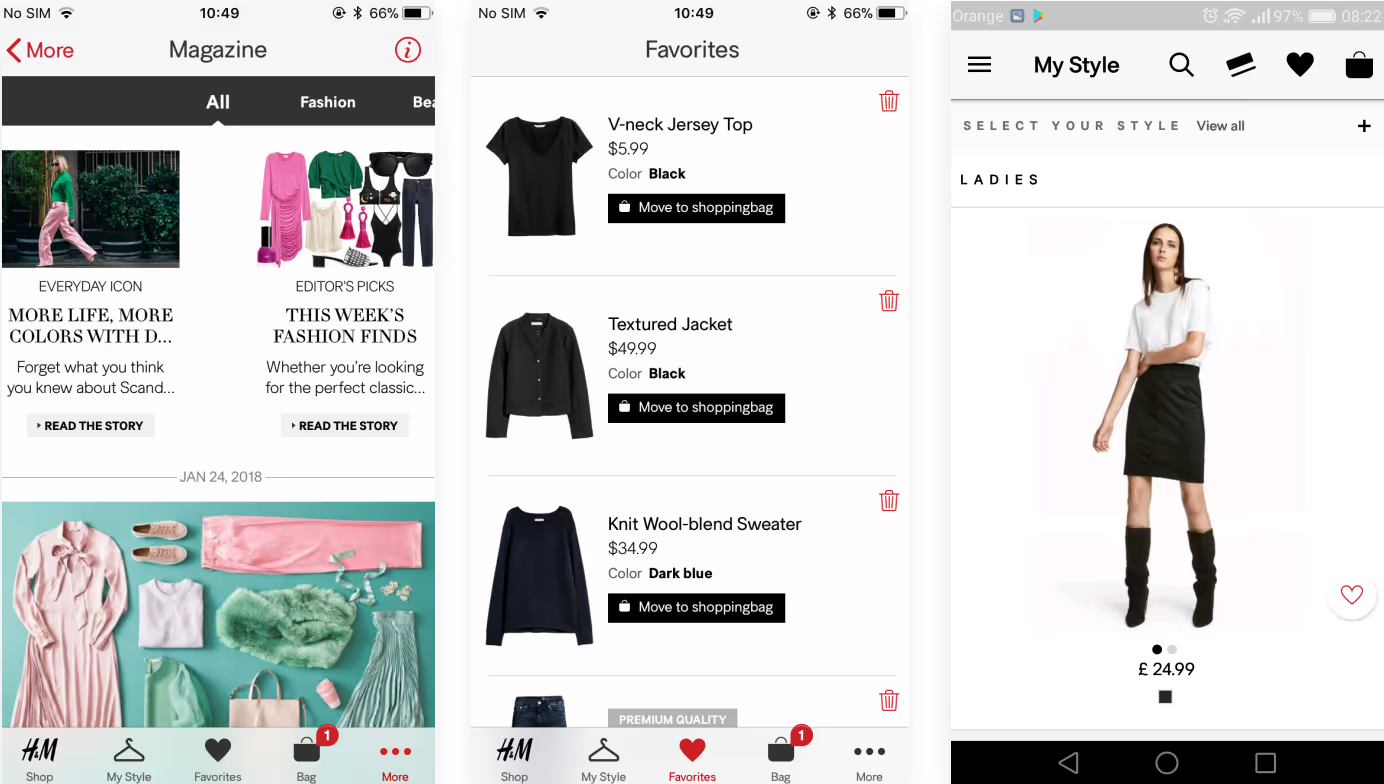
Reach search: includes top searched products, trending search categories, and links to commonly searched information (shipping, payments).
The icon presenting the H&M logo is easy to identify. An app preview consists of video and screenshots, including a description of the app's main features.
Dunkin' Donuts – Offers (Dunkin' Donuts perks and rewards) app provides DD Perks program members with rewards and loyalty offers, gift cards, On-the-Go Ordering with mobile pay, menus, and nutritional facts, as well as store locators.
See below how the Dunkin' Donuts customer loyalty rewards program can increase customer retention.

The Dunkin' Donuts app store presentation is rather good, with a clean photo, logo, and brand name. The characteristic icon and well-written descriptions are divided into sections. Custom graphics in Google Play strengthen brand recognition.
The Starbucks app is a convenient way to pay in-store or skip the line and order ahead. Rewards are built right in, and the customer collects Stars, for which he or she can earn free drinks and food with every purchase.
Building a customer loyalty program based on the loyalty app connected with payments can strengthen the bond with clients.

Good app store presentation with a clean coffee photo accompanied by a brand name. Characteristic icon and well-written description.
7-Eleven is a simple app created to collect and manage points. A customer is rewarded for buying the food and drinks in 7-Eleven stores. Earned points can be exchanged for rewards of various types. The app also offers access to available promotions and coupons.

The icon is very informative, thanks to its characteristic logo labeled with the brand name. App preview contains screenshots with descriptions, clearly presenting the app's core functions.
Parents App (Pampers Rewards: Saving & Gifts for Parents) is linked to the Pampers Rewards loyalty program. It enables customers to join the program and grants them 100 points just for signing in. The app's primary function is to scan promo codes available on Pampers products and exchange them for personalized rewards.

App icon consistent with brand look and feel. Informative application name and description. Preview screenshots contain a description informing loyalty members about core functionality.
The Huggies Rewards mobile app enables scanning and uploading receipts using a smartphone. Customers can also earn extra Huggies Rewards Points without purchasing products, just by reading helpful parenting articles, watching videos, and viewing personalized bonus offers.

There's a rich description of the application and good-quality screenshots of the application preview, each of which describes the promotion of basic functions
Tchibo (Tchibo – Mode, Wohnen, Lifestyle & Kaffee) mobile app is a combination of a loyalty program and mCommerce app. It gives access to loyalty cards and personal vouchers, enables mobile shopping, and informs about offers.
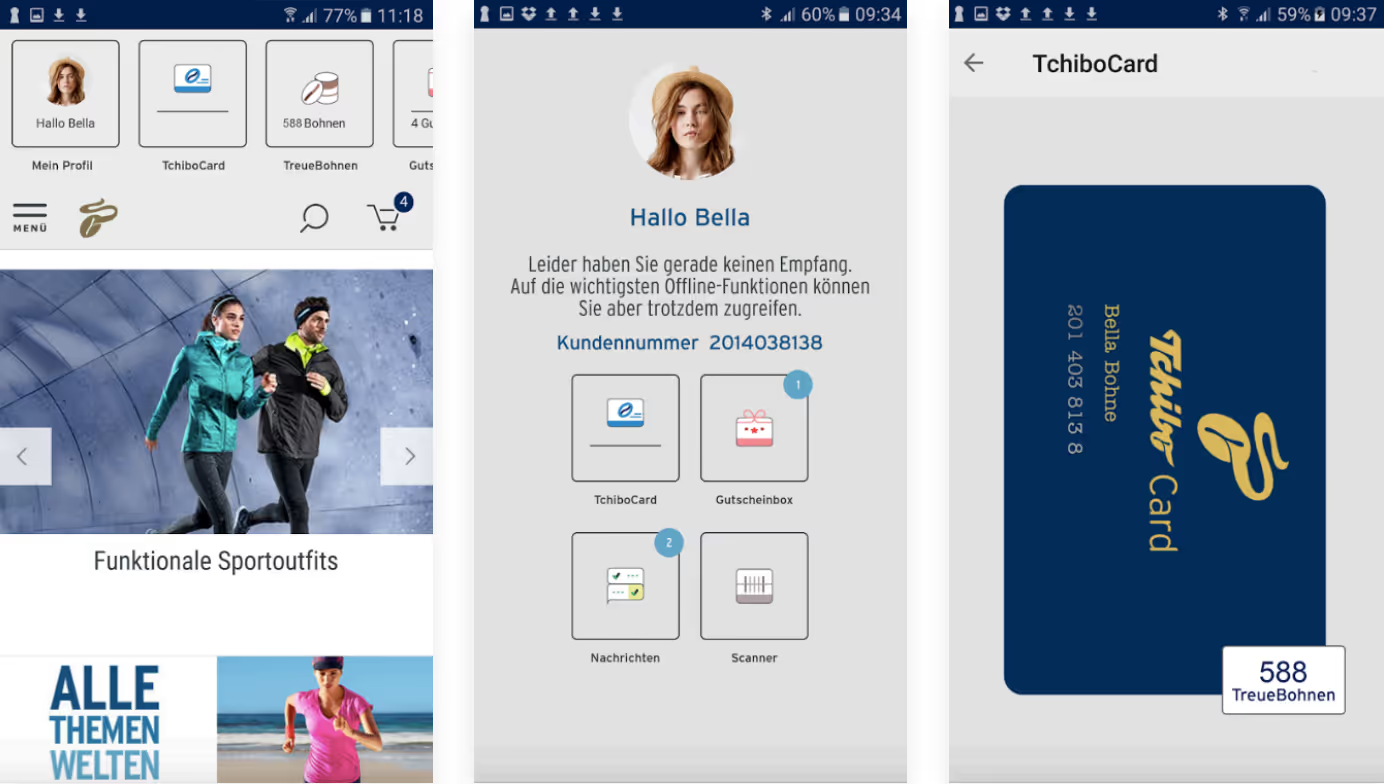
Simple, characteristic icons and header pictures in Google Play make it easy to identify the Tchibo brand. Mobile app description is both satisfying to the user and correct in terms of ASO.
Super-Pharm's application consists of all kinds of offers available in Super-Pharm stores. The customer can access a complete list of current coupons and promotions, a map of stores, and personal shopping lists.
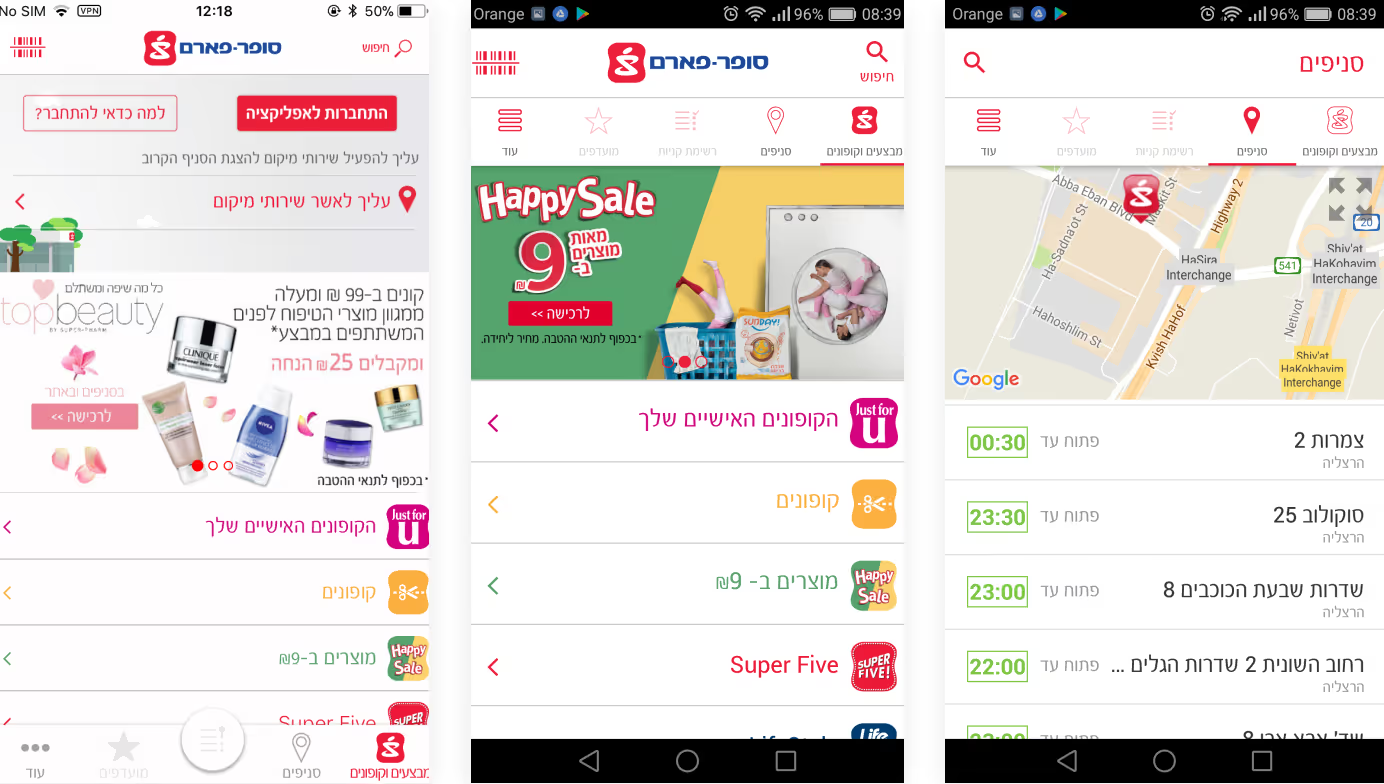
An easy-to-identify icon presenting the Super-Pharm logo, consistent with the header picture. Available app preview screenshots include a description of the main features of the app.
EQUIVA's transformative journey in the equestrian world is underscored by its innovative approach to customer engagement through the introduction of the EQUIVA mobile app. From their humble beginnings in 2003, EQUIVA has grown into a prominent force with over 80 stores across Germany, Austria, and Luxembourg.
The EQUIVA app, a cornerstone of the company's evolution, not only provides a convenient platform for equestrian enthusiasts to access a diverse range of products but also introduces a novel loyalty program – "EQUIVA Friends."
The described program, seamlessly integrated into the mobile app, allows users to stay updated on the latest offers and earn and accumulate "Hearts" with each purchase. These Hearts, serving as a unique currency within the loyalty framework, establish a bond between EQUIVA and its customers.
When users purchase at their EQUIVA store or the EQUIVA online shop, they'll earn two Hearts for every euro spent. As users accumulate more Hearts, they'll ascend through the bonus tiers, unlocking more significant savings, up to a 10% discount on all future purchases. Additionally, users can enjoy exclusive Friends discounts and a special birthday surprise for both them and their horses.
By leveraging the power of mobile technology and gamified loyalty, EQUIVA streamlined the shopping experience and created a more intimate connection with its customer base. The strategic combination of technology and personalized incentives underscores EQUIVA's commitment to evolve with the times and improve the overall equestrian experience for its loyal community.
The icon represents the horse to which the app is dedicated. The app preview consists of screenshots and comprehensive descriptions of the app's main functions.
Loyalty apps work particularly well in industries driven by repeat purchases and frequent customer interactions. They’re a smart way for brands to connect across both online and offline experiences. Find out where they shine!
Restaurants and food chains use loyalty apps to reward repeat visits, simplify ordering, and deliver personalized deals. With built-in payment options and mobile coupons, apps streamline the entire dining experience from cravings to checkout.
🔍 Example: Pret Perks lets customers earn stars and unlock surprise rewards via mobile.

Pret Perks mobile app. Source: https://keeping.studio/case-studies/pret-perks-app-animation
Retailers use apps to bridge physical and digital touchpoints. Loyalty apps help shoppers access offers, scan digital loyalty cards, and receive store-specific promotions without carrying anything extra.
🔍 Example: Decathlon blends in-store experiences with app-based rewards and product tracking.
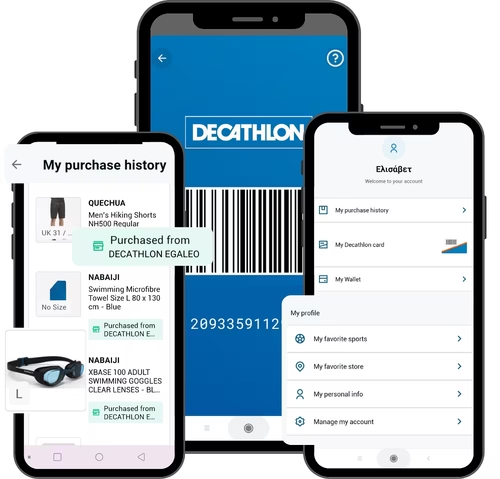
Decathlon mobile app. Source: https://www.decathlon.com.gr/en/content/120-decathlon-app
Fitness centers and wellness brands reward consistency and lifestyle goals. Apps help users track their habits, unlock health incentives, and receive content that supports their personal wellness journey.
🔍 Example: MyFitnessPal Premium offers badges, challenges, and exclusive features for engaged users.
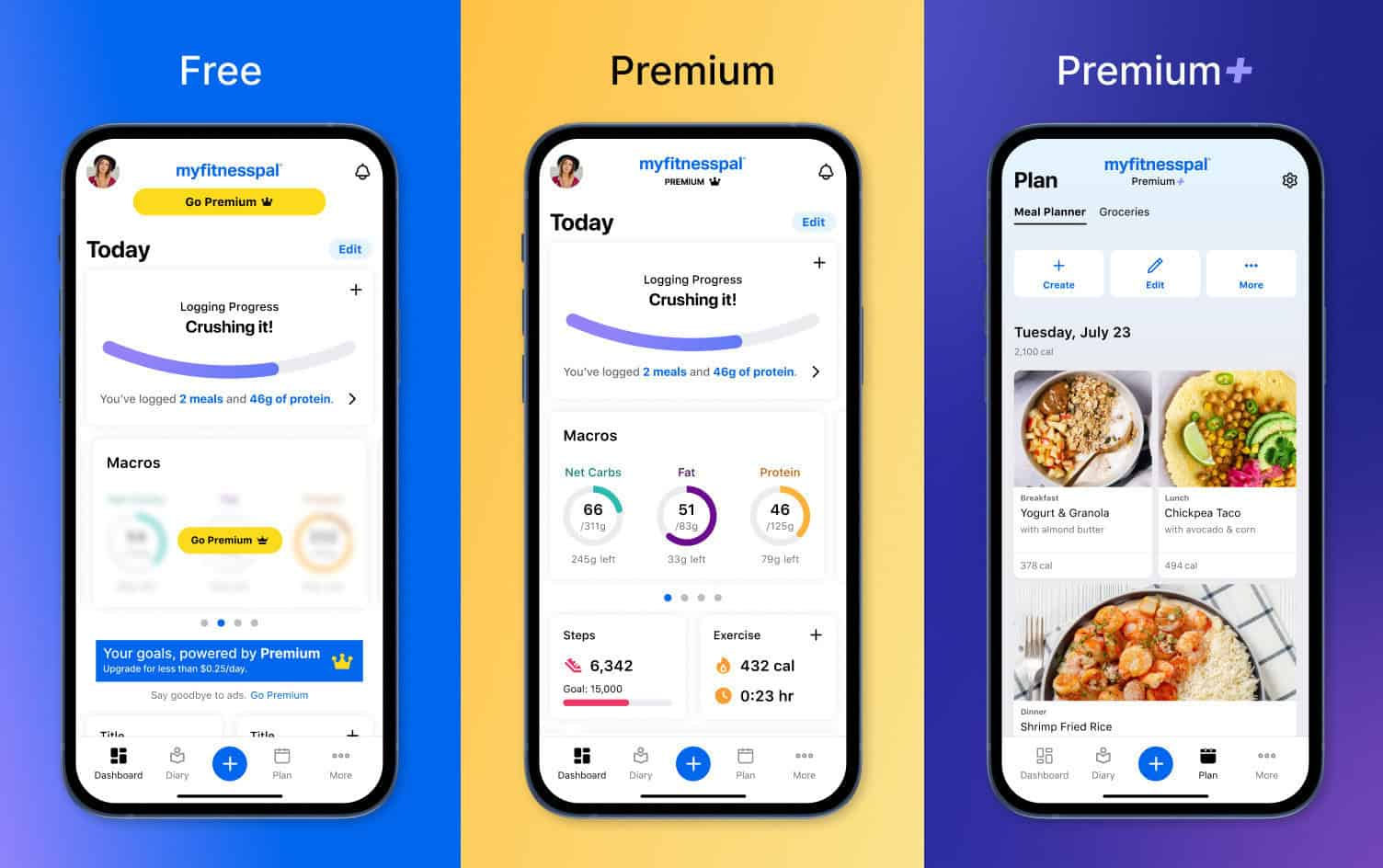
MyFitnessPal Premium mobile app. Source: https://blog.myfitnesspal.com/myfitnesspal-membership-pricing-tiers/
Car brands and service centers use loyalty apps to retain customers over time. From maintenance reminders to loyalty points for services or accessories, apps create ongoing brand touchpoints beyond the initial sale.
🔍 Example: Hyundai Star Rewards combines offers, content, and service tracking in one app.
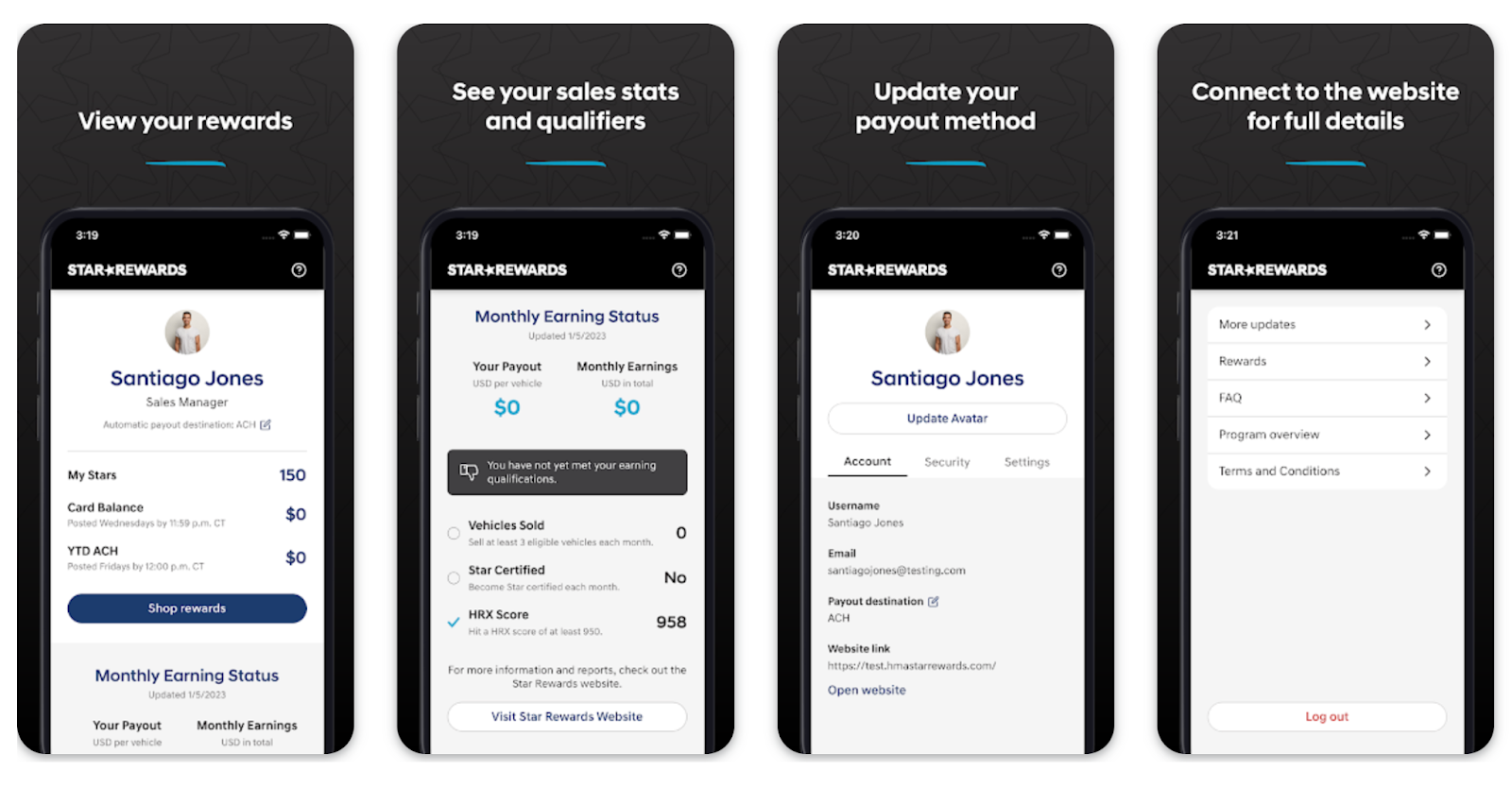
The Hyundai Star Rewards mobile app. Source: https://play.google.com/store/apps/details?id=com.itagroup.hyundaistarrewards&hl=en
Tech companies use loyalty apps to keep early adopters engaged with exclusive releases, bonus content, and ongoing support. These apps foster brand communities and reward long-term product use.
🔍 Example: Samsung Members offers early product access, diagnostics, and live chat for loyal users.
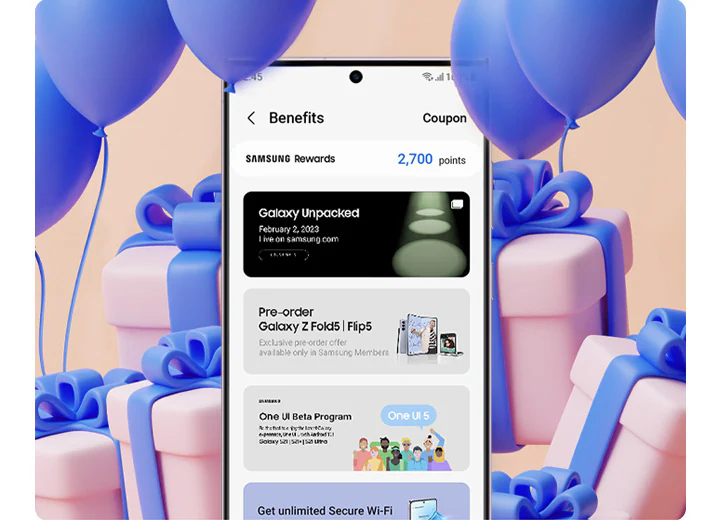
Samsung Members mobile app. Source: https://www.samsung.com/pl/apps/samsung-members/
In B2B and reseller ecosystems, loyalty apps reward engagement, incentivize training, and keep partners up to date with the latest offers. They also simplify reward tracking across distributed networks.
🔍 Example: HP Amplify Rewards tracks performance and delivers partner perks directly through the app.
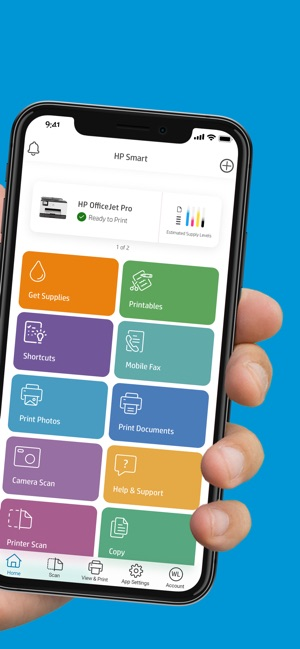
HP Amplify Rewards mobile app. Source: https://apps.apple.com/us/app/hp-smart/id469284907
Airlines, hotels, and travel platforms rely on loyalty apps to drive repeat bookings and enhance the travel experience. Real-time updates, personalized deals, and mobile check-ins keep users connected on the go.
🔍 Example: Accor ALL gives members loyalty points, VIP offers, and seamless booking options.
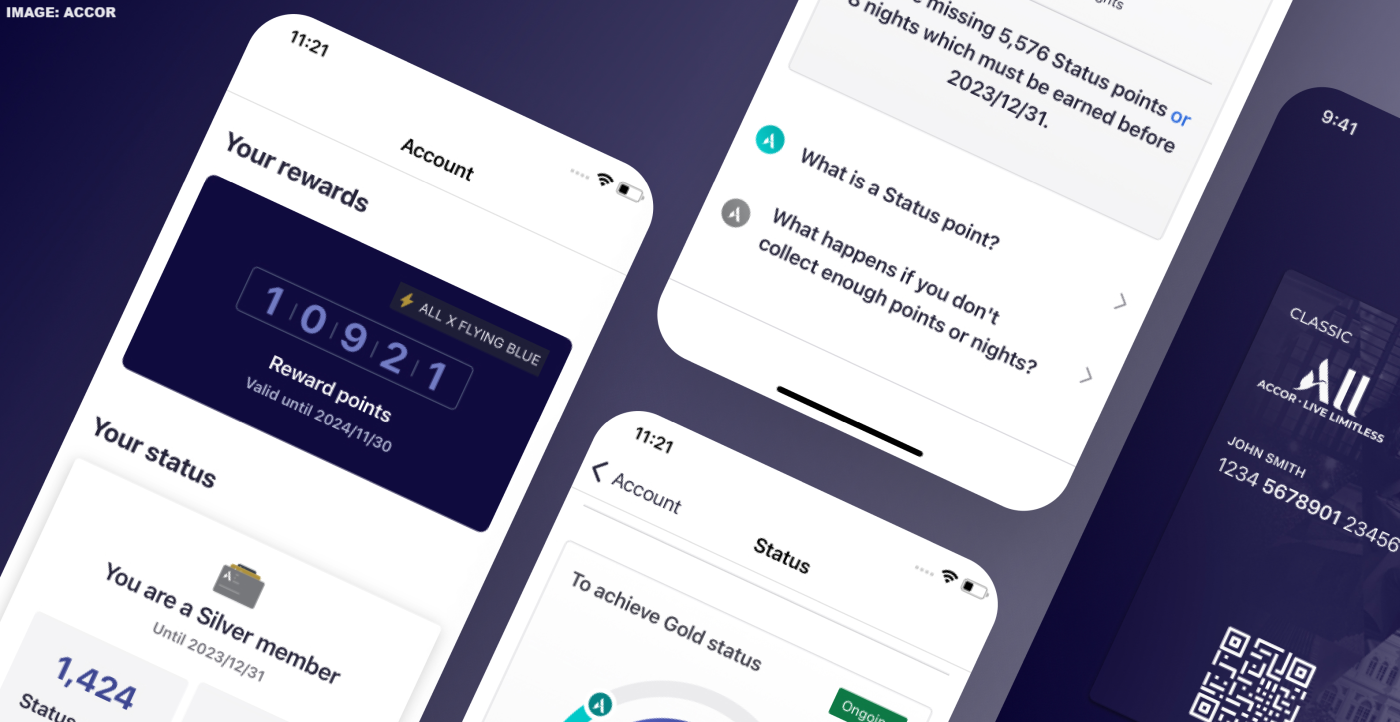
Accor ALL app mobile app. Source: https://apps.apple.com/us/app/all-com-hotel-booking/id489472613
Hotels, resorts, and venues use loyalty apps to elevate the guest experience. Members can unlock perks, access exclusive content, and book upgrades while reinforcing brand loyalty between visits.
🔍 Example: Cineplex SCENE+ blends movie rewards with food discounts and points redemption.

Cineplex SCENE+ mobile app. Source: https://www.cineplex.com/app
Loyalty apps help subscription-based brands reduce churn rates and deepen engagement. They surface personalized content, send renewal perks, and reward long-term subscribers based on behavior or preferences.
🔍 Example: HelloFresh offers credits, referral bonuses, and flexible account management via app.
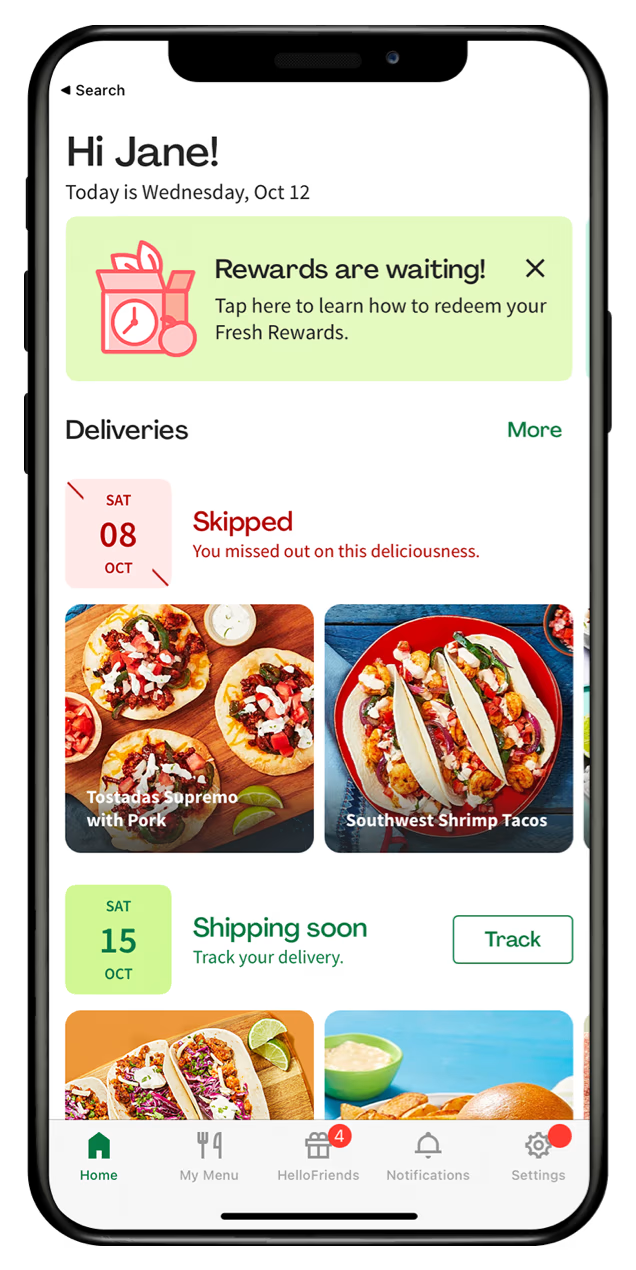
HelloFresh mobile app. Source: https://www.hellofresh.com/about/app
Edtech platforms use loyalty mechanics to motivate learners. Apps track progress, award milestones, and build a sense of community that helps turn learning into a habit and rewards commitment over time.
🔍 Example: Duolingo gamifies education with streaks, points, leagues, and learner badges.

Duolingo mobile app. Source: https://blog.duolingo.com/adventures/
At first glance, loyalty apps and loyalty cards might seem like two versions of the same thing: tools to collect points, earn perks, and keep customers coming back. But there's a pretty big difference in how they work and what they offer.
Think physical punch cards ("buy 9 coffees, get the 10th free") or plastic barcode cards you scan at checkout. They're simple, familiar, and still used in some places, but they have some big limitations. Lose the card? Forget it at home? Miss out. They also don't store much information beyond points or stamps, which limits how brands can engage with you.
They live on your phone, which means you almost always have them with you. But more importantly, they can do a lot more:
Apps also give brands something physical cards never could: data. That means smarter offers for you and better retention strategies for them. Win-win.
Implementing mobile loyalty programs stands out as a key strategy to foster customer exposure, increase customer retention rates, and cultivate unwavering brand loyalty. The multifaceted value derived from loyalty mobile applications extends beyond mere transactions, encompassing tangible and intangible benefits for end-users.
Loyalty mobile apps offer a spectrum of transactional advantages directly tied to product or service purchases.
The most prevalent among these are:
Beyond transactional perks, loyalty mobile apps add an extra layer of surprises unrelated to direct brand offerings.
Some noteworthy non-transactional benefits include:
When delving into the realm of mobile loyalty program applications, it becomes evident that these apps come in various forms, each equipped with distinctive features to enhance user engagement. Find out about the most popular functions that often find a place in these applications.
Leveraging QR code or barcode scanning functionalities to provide users with rewards seamlessly.
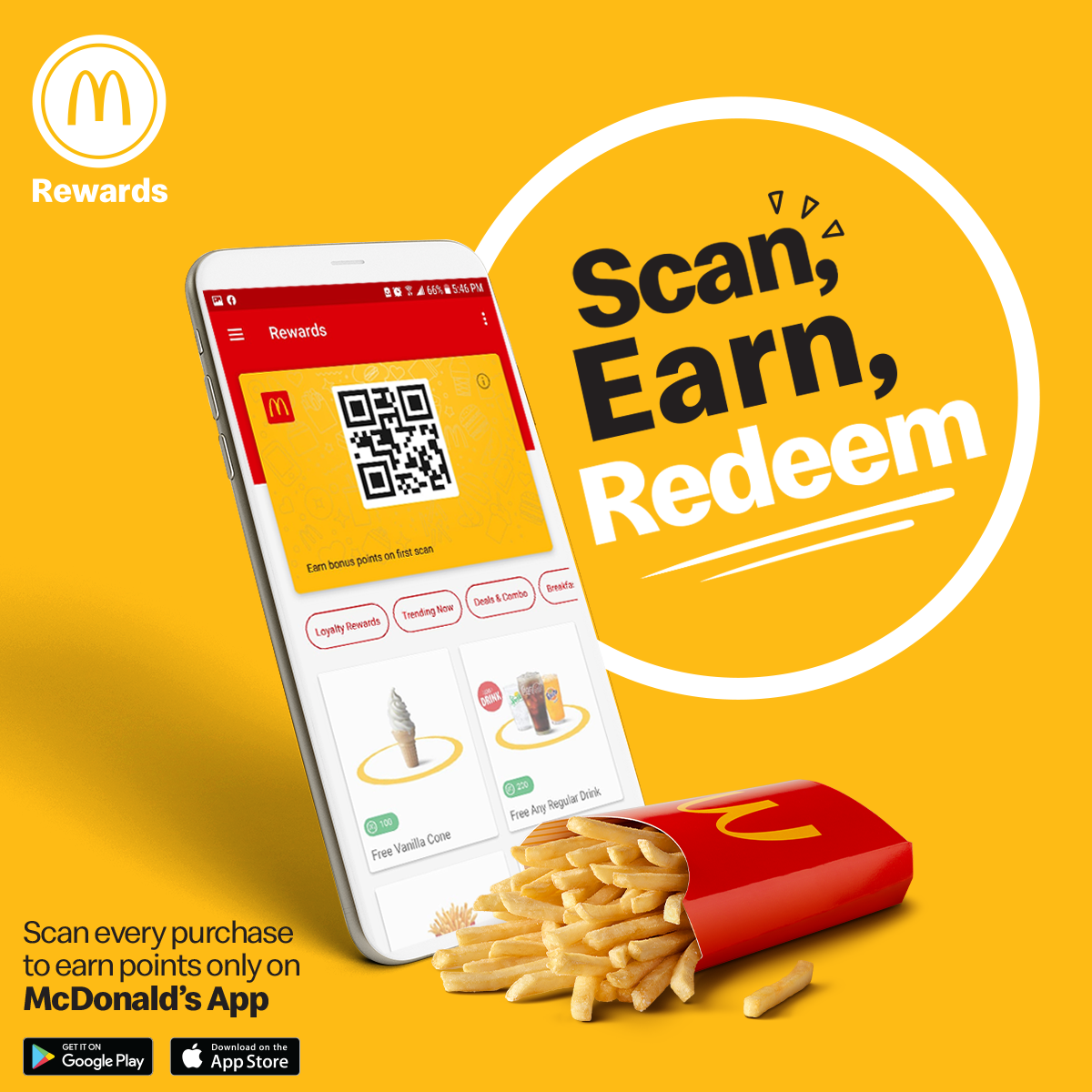
Mimicking the traditional customer loyalty card system, users earn stamps or punches for each transaction, leading to eventual rewards.
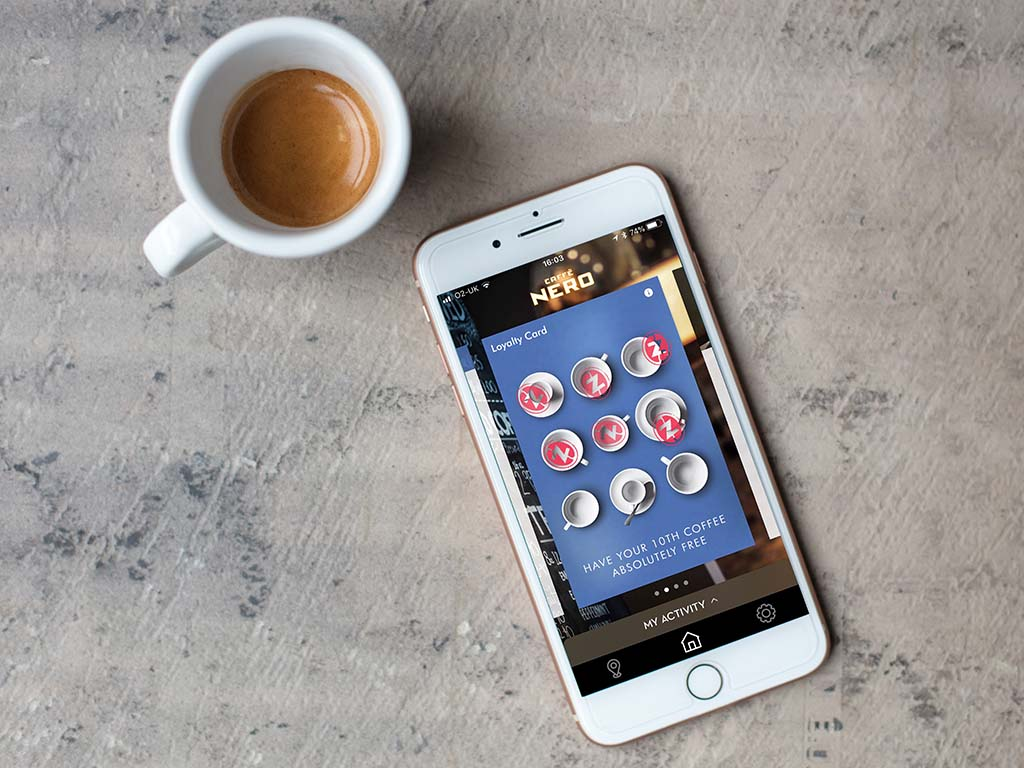
Incorporating an element of surprise by unveiling exclusive and hidden offers, adding an element of excitement for loyal customers.

Showcasing promotions, discounts, or exclusive deals that are specifically tailored for loyalty program members.
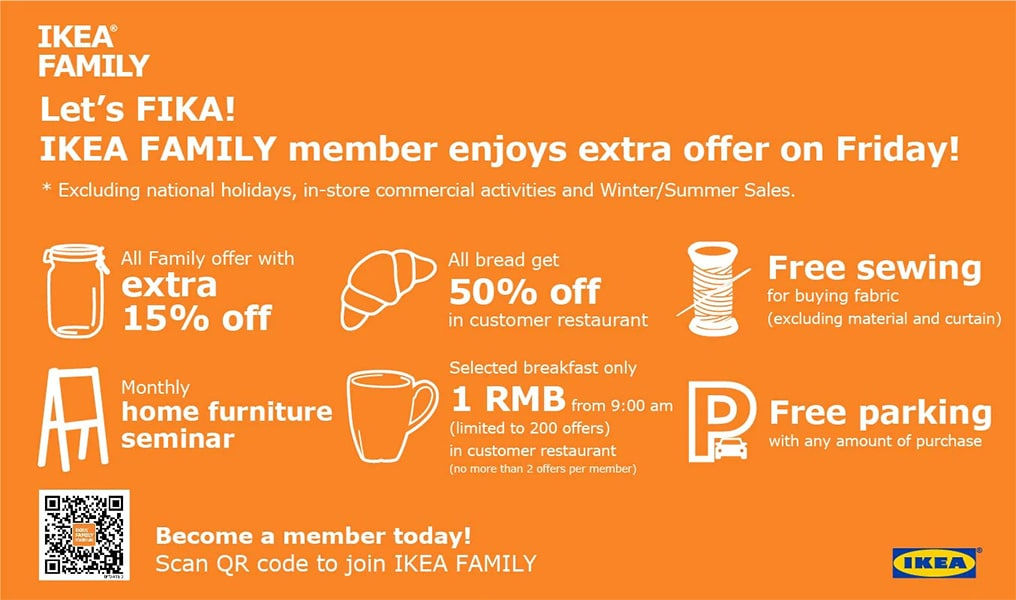
Incorporating a mileage system where users earn virtual miles that can be redeemed for various benefits.
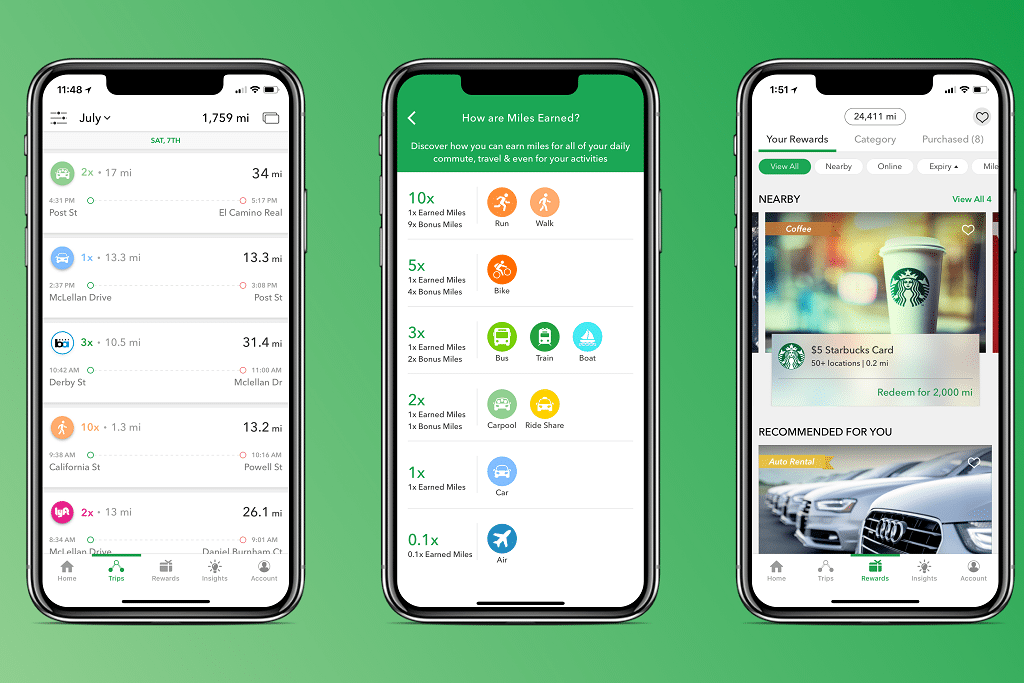
Push notifications are one of the most powerful tools in a loyalty app, but only when done right. Customers don't want spammy blasts about every sale. What they do appreciate is:
Relevant, well-timed messages that feel helpful. If your app can master this balance, you're already ahead.
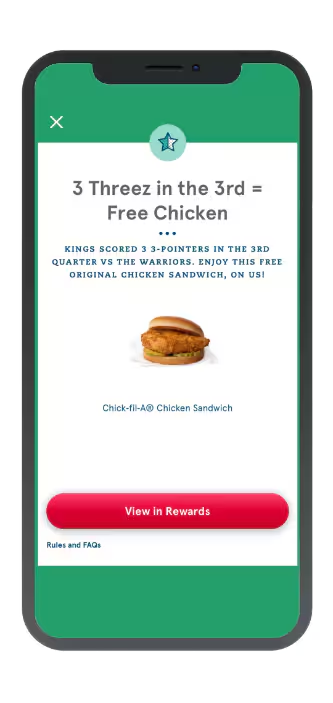
Loyalty apps that integrate with Apple Wallet or Google Wallet instantly make life easier. No need to open the app, find the barcode, and hope the scanner works. With wallet integration, customers can:
It's convenient, frictionless, and increasingly expected from bigger brands.
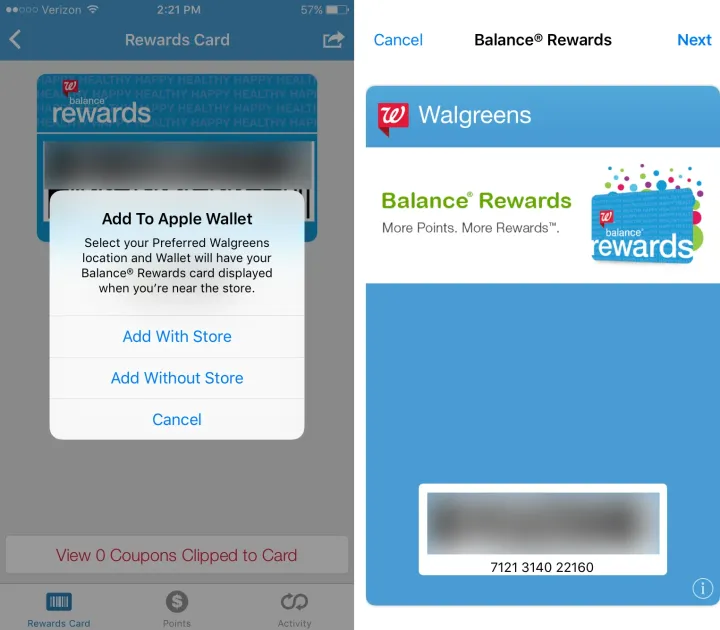
Nobody wants a one-size-fits-all loyalty experience anymore. Customers expect their loyalty app to know them, at least a little. That means:
The more relevant the experience feels, the more likely people are to use the app regularly.
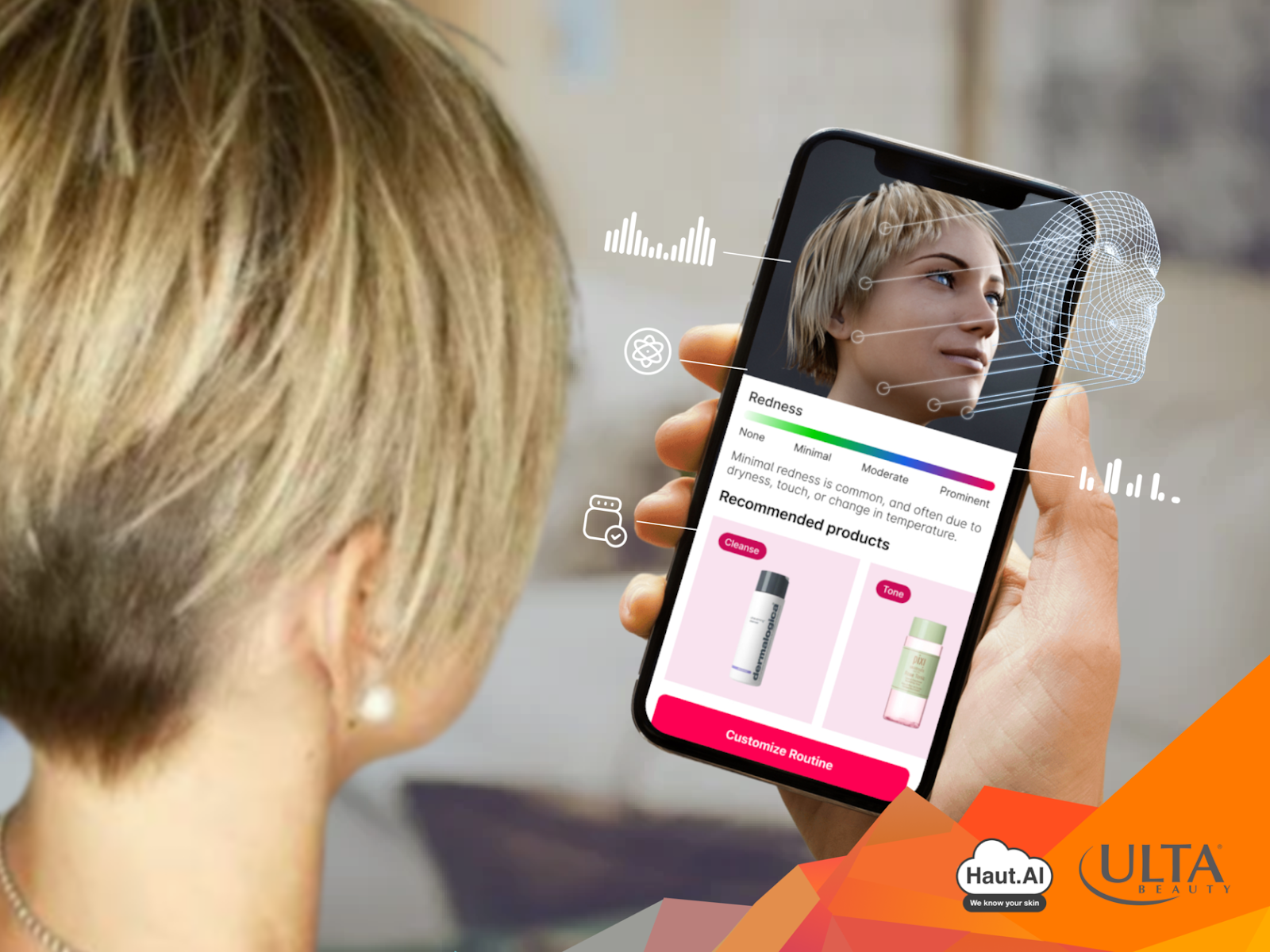
Points and discounts are great, but a little fun goes a long way. That's where gamification comes in. Think:
These elements tap into basic human psychology – progress, achievement, and surprise – and they can turn an ordinary app into something people want to open.
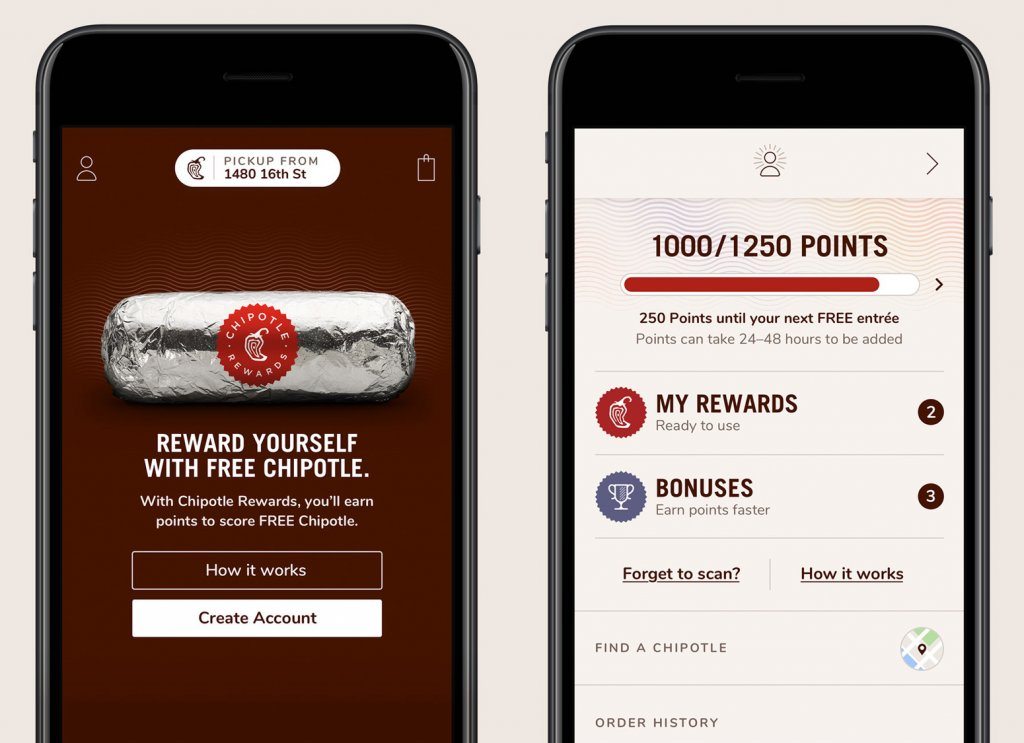
Embarking on the journey to develop a compelling and interactive loyalty mobile application mirrors the process of creating any mobile app. To ensure success, follow the key steps below.
Begin by assessing the likelihood of your target audience embracing the loyalty mobile app. Understand their preferences, needs, and the value they associate with customer loyalty programs. Taking this basic step prepares the ground for a customized and effective app.
Dive into benchmarking exercises, examining successful loyalty apps in various industries. Identify mechanics that have proven to be well-received in the market. Extend your research beyond your specific sector to gain insights that could give your loyalty app a competitive edge.
Develop a minimum viable product that encapsulates the core features of your loyalty mobile app. Concentrate on 1-2 pivotal mechanics that align with your app's objectives. Prioritizing essential elements in the MVP allows for efficient testing and refinement before a full-scale launch.
If your business already operates an eCommerce platform or web portal dedicated to loyalty, ensure a seamless integration of all loyalty features. That kind of consolidation prevents customer confusion by providing a unified and cohesive experience across all touchpoints.
It depends, but here's a ballpark.
If you're building a custom loyalty app from scratch, expect to spend anywhere from $40,000 to $150,000+, depending on:
On the other hand, if you use a SaaS loyalty platform, you're usually looking at:
For most businesses, starting with SaaS and scaling into a custom app later is a smart way to test your loyalty model without breaking the bank.

If you have specific loyalty mechanics in mind or want tight integration with your ecosystem, go custom. If you need speed, affordability, or want to test an idea, go SaaS.
Yes, if you stick to apps from trusted brands or well-known app stores.
Most major retailers and chains have loyalty apps now (Starbucks, Tesco, Dunkin', etc.), and they're perfectly safe to use. Just check app reviews and make sure you're downloading from official sources – not some random third-party clone.
Bonus tip: Many apps now replace physical cards entirely, so you can ditch the plastic and go digital with confidence.
Yes, but only if the program feels like it was built for them.
Gen Z expects:
Gamification, social sharing, and even sustainability perks (like eco-points) also go a long way. They're not against loyalty but rather allergic to boring.
In concluding our analysis of successful mobile loyalty programs, we walked through the basic concepts, uncovering the nuanced nature of the transactional and non-transactional benefits that make these applications a must.
From alluring features such as rewards, loyalty points, achievements, and scan-to-receive perks to the more traditional punch cards and mileage-based rewards, the spectrum of possibilities within loyalty schemes is vast. Our guide unveiled their versatility, showcasing how they seamlessly integrate into industries like brand reselling, travel, food, retail, with offline stores, and others. This confirms the claim that loyalty apps aren't just passing trends, but strategic tools to support sustainable customer engagement.
A well-crafted mobile loyalty program undoubtedly has the power to elevate customer relationships and drive business success in the digital age. Follow the best in your field and get inspired by the top mobile loyalty apps when developing your solution.
Get more inspiration from the Top 100 Loyalty Programs report, or see the future of loyalty programs at Loyalty Trends research.
Get a weekly dose of actionable tips on how to build and grow gamified successful loyalty programs!




